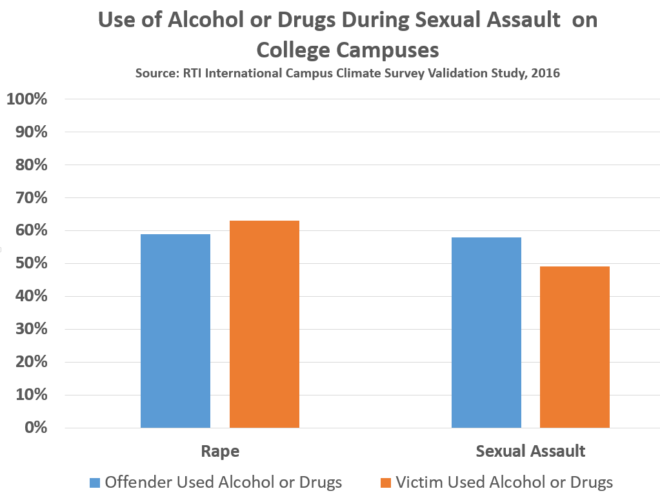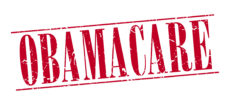John R. Graham • Tuesday, August 30, 2016 •
 Much has been written about the dramatic price hikes for EpiPen, a product that injects a drug that counters severe allergic reactions (anaphylactic shock). According to Aaron E. Carroll, writing in the New York Times, the real (inflation adjusted) price of EpiPens has risen 4.5 times since 2004.
Much has been written about the dramatic price hikes for EpiPen, a product that injects a drug that counters severe allergic reactions (anaphylactic shock). According to Aaron E. Carroll, writing in the New York Times, the real (inflation adjusted) price of EpiPens has risen 4.5 times since 2004.
Both Carrol and the Wall Street Journal have described how government has allowed EpiPen’s manufacturer to hike prices so much. EpiPen is complicated, being both a drug and a device. The drug is very inexpensive, and not patented. The device is protected by patents issued in 2005, which expire in 2025.
First, the government made a couple of interventions in the market that allowed the manufacturer to raise prices above the free-market level. The federal government changed its guidelines such that EpiPens must be sold in packages of two (even though customers might prefer just one, or at least an odd number). Also, the feds gave public-emergency grants to states on the condition that they stockpile EpiPens.
Lawrence J. McQuillan • Thursday, August 25, 2016 •

More than 52 million people in the United States, 21 percent of the population, participate in major means-tested government assistance programs each month, according to the U.S. Census Bureau. More than 80 federal programs dole out roughly $1 trillion of benefits and services to low-income people annually (see the amazing image above from the U.S. House Ways and Means Committee).
The creation and growth of this massive web of government programs are the result of Washington’s “Iron Triangle”: Politicians who want votes and campaign contributions; bureaucrats who want to administer these programs with bigger annual budgets; and program beneficiaries and well-intentioned advocates for the poor.
Supporters view these programs as evidence of a compassionate society, helping to uplift the poor and disadvantaged. I would be inclined to agree if not for the overwhelming evidence that these programs, in fact, create dependency, do little to alleviate poverty, and shred the moral connective tissue of a civil society.
Samuel R. Staley • Wednesday, August 24, 2016 •

Chart created by the author from “Campus Climate Survey Validation Study,” RTI International, Figure 21
Students at Stanford University will be greeted with a ban on hard liquor this fall, all in an effort to control irresponsible behavior among its students and, in part, to address campus sexual assault. Alcohol bans are unlikely to have much of an effect on campus sexual assault and, in fact, might make matters worse. The core of the sexual assault problem on college campuses is one of character, not errant drinking or drug abuse, and prohibition will make it harder, not easier, to address this problem.
The ban is also ill-informed, based on the most recent evidence on campus sexual assault analyzed by Christopher Krebs at RTI International and his colleagues for the U.S. Bureau of Justice Statistics. In-depth surveys of students and sexual assault victims at nine colleges and universities found that offenders may have been under the influence of alcohol or drugs in 59% of the rape cases reported by survey respondents, and the percentage on different campuses ranged from 47% to 71%. Rape victims reported being under the influence of alcohol or drugs in 63% of the incidents, ranging among the campuses from 43% to 75%. Among those victims reporting they were raped, about half said they were incapacitated by drugs or alcohol at the time of the incident where as about about 15% of those reporting incidents of sexual assault indicated they were incapacitated. Of course, these are still a high percentages of use and abuse associated with assault—alcohol and drugs are still important factors—but these figures suggest the impact of a ban will be on the margins, not a major shift in behavior.
John R. Graham • Tuesday, August 23, 2016 •
 A great opportunity to reduce costs and improve quality in U.S. health care is telehealth, which uses information technology to eliminate distance between a patient and a medical provider. A subset of telehealth is telemedicine, which allows physicians to consult patients over the phone, by text, or by video.
A great opportunity to reduce costs and improve quality in U.S. health care is telehealth, which uses information technology to eliminate distance between a patient and a medical provider. A subset of telehealth is telemedicine, which allows physicians to consult patients over the phone, by text, or by video.
Take a couple of obvious examples: Telepsychiatry, whereby a patient undergoing talk therapy has a session with his psychiatrist over the phone instead of having to go to the doctor’s office; or e-prescribing, whereby a patient can describe symptoms over the phone or send a photo (of, for example, a rash) and the doctor can prescribe immediately (if appropriate).
Most people tend to categorize these as “no-brainers,” and if we paid for our own care directly, these and many other examples would have long since taken off. However, because payment for medical care is dominated by health insurers and government, they have been stifled. Third-party payers fear being forced to pay fraudulent claims.
Lawrence J. McQuillan • Monday, August 22, 2016 •

The California Department of Transportation (Caltrans) has won the Independent Institute’s second California Golden Fleece Award, given out quarterly to state or local agencies or government projects that swindle taxpayers or break the public trust.
With primary responsibility for highway maintenance projects in California, the irresponsible Caltrans has wasted billions of taxpayer dollars and even lied to lawmakers to cover its tracks. Caltrans’s history of wasting taxpayer money, while at the same time demanding more funding, justifies drastically scaling back the agency and transferring all highway and bridge maintenance to private contractors who submit winning competitive bids. This change should accompany broader reforms to modernize California’s highways, such as privatizing the public highways and bridges, which would stimulate new investment; adopting systems that adequately fund road repairs while also reducing traffic congestion and pollution; and preparing for the long-term switch to electric vehicles.
California has a unique opportunity to lead the nation in road transportation innovation, but unless bold steps are taken to scale back Caltrans, progress will be fleeting at best.
John R. Graham • Friday, August 19, 2016 •
 Physicians in Canada’s largest province, Ontario, have rejected a contract negotiated between the Ontario Medical Association and the provincial health ministry. The more than two-year-old dispute shows no sign of ending.
Physicians in Canada’s largest province, Ontario, have rejected a contract negotiated between the Ontario Medical Association and the provincial health ministry. The more than two-year-old dispute shows no sign of ending.
Every Canadian is covered by a provincial government health plan. Doctors therefore have only one plan with which they must contract. Individual doctors, however, cannot decide how much to charge their patients. Instead, they depend on a centrally bargained contract that determines fees for every procedure and practice, from the skyscrapers of downtown Toronto to the windswept hamlets on the frozen shores of Hudson Bay.
No wonder it takes more than two years to negotiate a contract. According to the Globe and Mail, the doctors’ demands were threatening to bust an already heavy-laden budget:
The hardline stand of Ontario’s doctors raises questions across the country about how to balance the labour rights of a well-organized profession with spiralling health costs that threaten to swamp provincial budgets as populations age and guaranteed federal health transfers grow at a slower rate.
At least Ontario’s doctors did not go on strike, as young doctors in Britain did recently. It is hard for Americans to imagine the entire profession of medicine walking off the job like U.S letter carriers did in 1970. However, labor strife among physicians appears to be common in countries where the government monopolizes payment for medical care.
Samuel R. Staley • Friday, August 19, 2016 •

Prague Castle, once the seat of monarchs, is now the home to one of Europe’s most successful liberal democracies.
Prague, Czech Republic is well recognized for its historical architecture and role as the cradle of civilization in Western Europe, but it’s role in reinventing itself as a peaceful, market-oriented democracy in the wake of Communism’s fall deserves to be a centerpiece of contemporary discussions about freedom and how easily it can be lost. For those born after 1990, intolerant, repressive and illiberal governments seem to be distant, abstract, isolated cases—Cuba, North Korea, Venezuela—but modern-day Prague is a living testimony that the freedoms U.S. citizens may take for granted today can be dashed by the heavy hand of the state. A recent trip to Prague as part of a workshop in classical liberal political economy with the Cevro Institute brought these realities home.
On August 21st, 1968, 250,000 communist troops supported by nearly 2,000 tanks from five Warsaw Pact nations invaded Czechoslovakia to put an end to eight months of “bourgeois” reforms that granted greater freedom of expression, freedom to the press, and wider democracy to Czechoslovakian citizens, ending what is now called the “Prague Spring.” Seventy-two Czechs and Slovaks were killed, more than 700 wounded, and 300,000 people fled the country as as the Soviet Union re-instituted the hegemony of the State and one-party rule.

Site in Prague where two students burned themselves alive to protest a renewed crackdown on basic freedoms
The Czechs and Slovaks weren’t ready to just cave in, however. Instead, they pioneered nonviolent resistance to raise awareness of Communism’s repression and agitate for further reform. Two students burned themselves alive to protest the renewed crackdown on personal freedoms. Protests rippled through the leadership of the Soviet satellite states, and a demonstration against the invasion even cropped up in Moscow. The military intervention was supposed to subdue the dissident nation in weeks, but actually took eight months. Many credit the Prague Spring with sowing the seeds for the break up of the Soviet Union and the “Velvet Revolution,” the peaceful, nonviolent separation of the Czech Republic and Slovakia, and their transitions to modern democracy and market economies.
John R. Graham • Thursday, August 18, 2016 •
 The Centers for Medicare & Medicaid Services (CMS) has just made the remarkable claim that medical costs paid by health insurers operating in Obamacare’s exchanges declined in 2015 from 2014:
The Centers for Medicare & Medicaid Services (CMS) has just made the remarkable claim that medical costs paid by health insurers operating in Obamacare’s exchanges declined in 2015 from 2014:
Per-enrollee costs in the ACA individual market were essentially unchanged between 2014 and 2015. Specifically, after making comparability adjustments described below, per-member-per month (PMPM) paid claims in the ACA individual market fell by 0.1 percent from 2014 to 2015. For comparison, per-enrollee costs in the broader health insurance market grew by at least 3 percent.
The agency’s report, however, compares apples to oranges. When discussing the change in costs in the exchange, it estimates medical claims. But when discussing changes in employer-sponsored health insurance, it estimates premiums (which increased 3 percent). The average Obamacare premium increased 5.2 percent in 2015, more than employer-sponsored coverage. (See my note below.)
Robert Higgs • Wednesday, August 17, 2016 •
 Government can hardly ever do just one thing. Its action has repercussions, and these repercussions have repercussions, and so forth. Even when the government’s initial action may seem compassionate or productive, it is highly unlike that the repercussions will prove likewise.
Government can hardly ever do just one thing. Its action has repercussions, and these repercussions have repercussions, and so forth. Even when the government’s initial action may seem compassionate or productive, it is highly unlike that the repercussions will prove likewise.
Of course, private action also has repercussions, some of which may be unpleasant or harmful. But in the private sphere, the likelihood is much greater that people will respond to the negative feedback of information about adverse repercussions by finding diverse ways to rectify mistakes that have been made, whereas in the government sphere any bad action will either generate no negative-feedback incentive for rectification of mistakes or will, instead, only set in motion a Madisonian-Misesian dynamic in which one cruel or destructive action becomes the initial link in a long chain of reactive interventions, each as adverse as the proceeding ones, if not worse.
Scholars and analysts have put a great deal of effort into the design of economic systems or arrangements that will give rise to optimal outcomes. Usually, however, the model is premised on the assumption that decision makers make choices that reliably yield the result they seek. Such an assumption, in general, does not describe the real world, where the intrinsic uncertainty associated with physical, technological, social, and economic variables, among other things, guarantees that mistakes will occur. So, the crucial question is not simply how to choose the best course of action, but also how best to respond to errors when they occur.
Mary L. G. Theroux • Monday, August 15, 2016 •
Rio de Janeiro, April 1, 2016: Hundreds of taxis paralyzed traffic in a massive protest against a court decision authorizing the operation of Uber.An interesting detail emerged in the coverage of the armed robbery of U.S. swimming star Ryan Lochte and three of his teammates in Rio over the weekend:
The USOC [U.S. Olympic Committee] advised athletes not to use taxis, but to take USOC vehicles, media buses or Uber … Uber is approved by the State Department, one person familiar with the matter said, in part because of its location-tracking ability.
Mr. Lochte and his teammates were riding in a taxi early Sunday morning when they were stopped by gunmen dressed as armed police and robbed.*
You may recall that Rio taxi drivers had held a protest against Uber that paralyzed that city’s streets in April (though paralyzing Rio’s streets generally requires little coordinated effort), arguing that Uber drivers are only able to “undercut them because they are not subject to the same costly training, insurance and safety laws taxi drivers face.” [Emphasis added]
Whether or not explicitly, even the U.S. State Department apparently recognizes that market innovation beats mandated standards.
——-
*Update 8/19/16
The now-revealed actual facts of the case do not affect the point of this post, to wit, “Uber is approved by the State Department.”
 Much has been written about the dramatic price hikes for EpiPen, a product that injects a drug that counters severe allergic reactions (anaphylactic shock). According to Aaron E. Carroll, writing in the New York Times, the real (inflation adjusted) price of EpiPens has risen 4.5 times since 2004.
Much has been written about the dramatic price hikes for EpiPen, a product that injects a drug that counters severe allergic reactions (anaphylactic shock). According to Aaron E. Carroll, writing in the New York Times, the real (inflation adjusted) price of EpiPens has risen 4.5 times since 2004.

 A great opportunity to reduce costs and improve quality in U.S. health care is
A great opportunity to reduce costs and improve quality in U.S. health care is 
 Physicians in Canada’s largest province, Ontario, have rejected a contract negotiated between the Ontario Medical Association and the provincial health ministry. The more than two-year-old dispute shows no sign of ending.
Physicians in Canada’s largest province, Ontario, have rejected a contract negotiated between the Ontario Medical Association and the provincial health ministry. The more than two-year-old dispute shows no sign of ending.

 The Centers for Medicare & Medicaid Services (CMS) has just made the
The Centers for Medicare & Medicaid Services (CMS) has just made the  Government can hardly ever do just one thing. Its action has repercussions, and these repercussions have repercussions, and so forth. Even when the government’s initial action may seem compassionate or productive, it is highly unlike that the repercussions will prove likewise.
Government can hardly ever do just one thing. Its action has repercussions, and these repercussions have repercussions, and so forth. Even when the government’s initial action may seem compassionate or productive, it is highly unlike that the repercussions will prove likewise.




